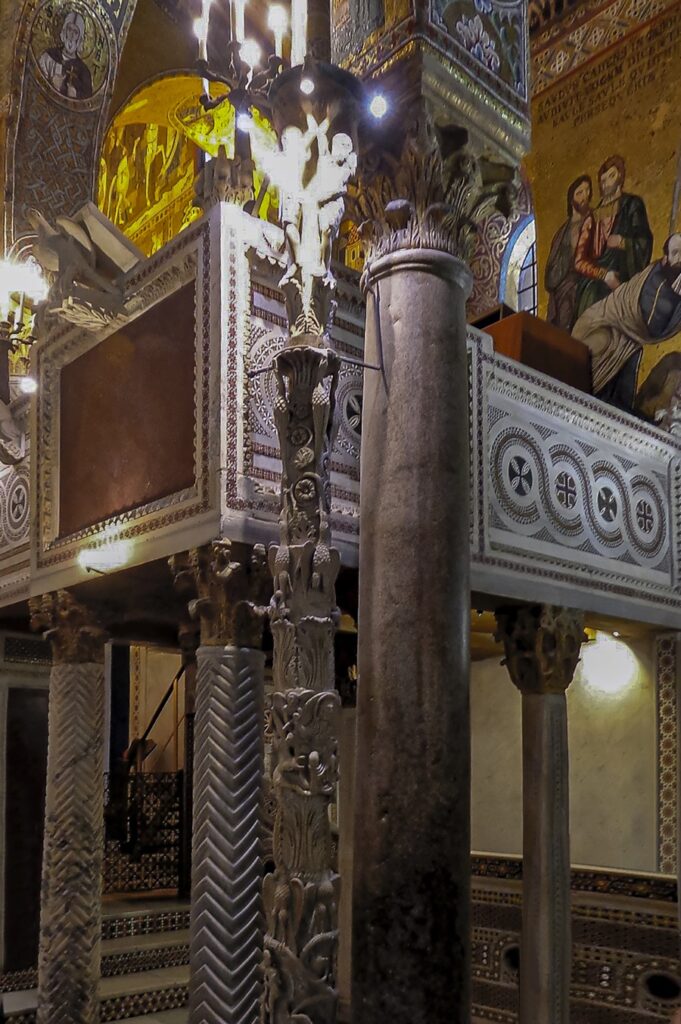The ambo is one of the focal points of the Eucharistic celebration, since it is in this sacred place that the word of God is proclaimed, the Gospel and the Epistles are read and the people are preached to. This is why it is placed on the south side of the nave, where the sun reaches its maximum brightness. The word proclaimed has the power to overcome darkness and death. In Norman churches, the ambo, the Paschal candle and the baptismal font formed a single monument dedicated to the Resurrection. In particular, the font, which represented rebirth, took its place below the ambo, while the candle, which symbolised light, beside it took the form of the empty tomb. The ambo of the Palatine Chapel consists of two cubic elements supported by white marble columns with zigzag decoration, small pillars with geometric motifs and ancient support columns. Among the marble slabs, rich in inlays and mosaics, one is entirely made of porphyry, while the others have a mosaic decoration with geometric motifs such as circles and bands. The two parapets have supports with the representation of the eagle, symbol of St John, and the lion, symbol of St Mark.